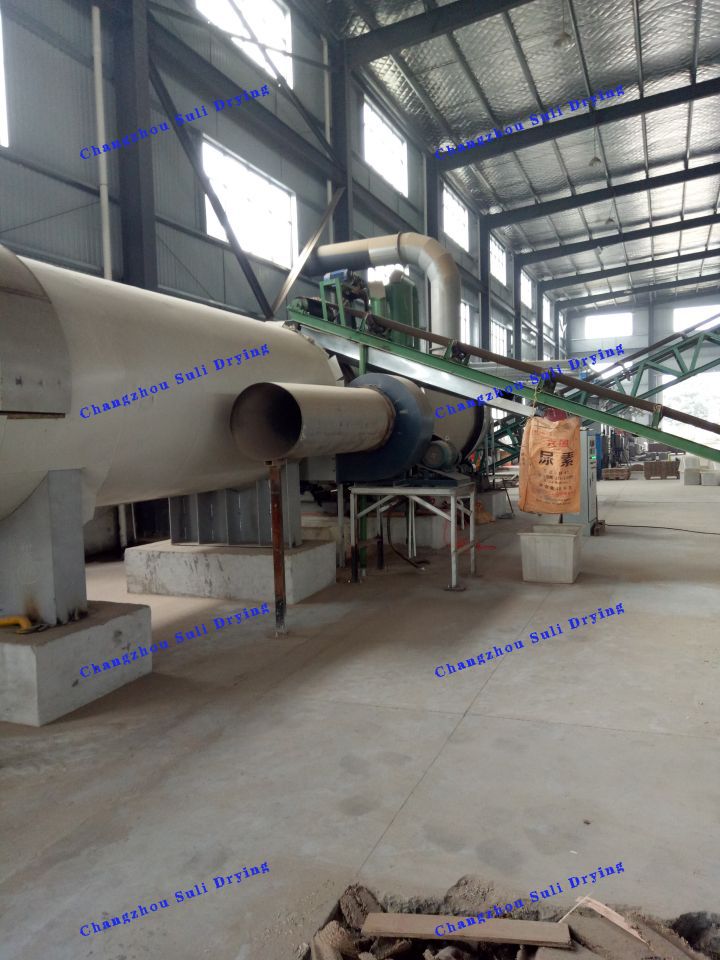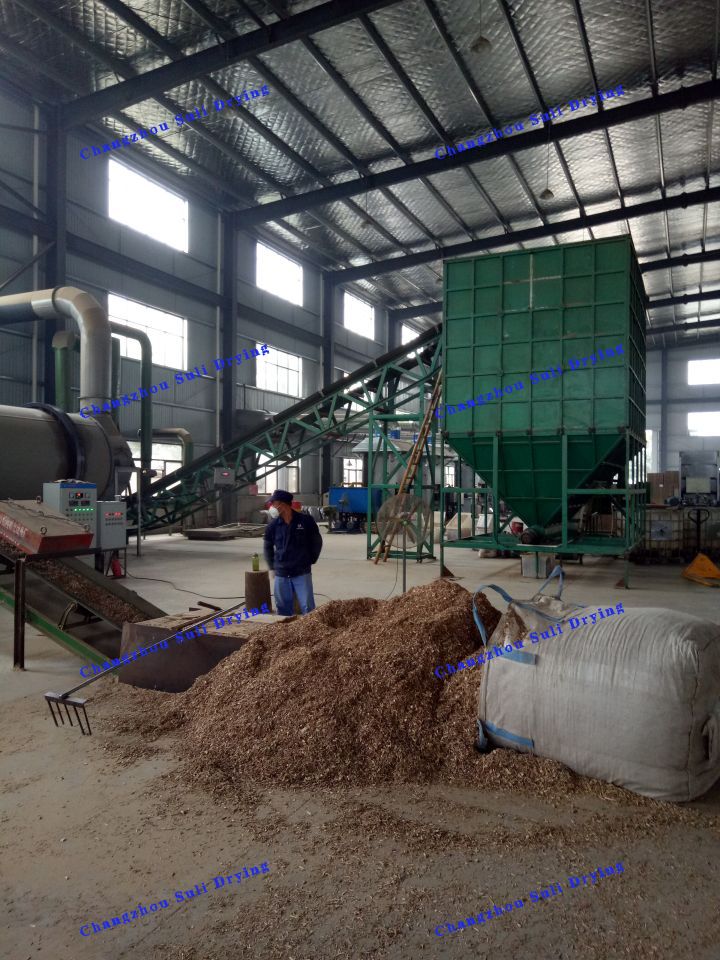Blast furnace slag introduction:
Slag is a by-product of the blast furnace ironmaking process.
During the ironmaking process, iron oxide is reduced to metallic
iron at high temperatures, and impurities such as silicon dioxide
and aluminum oxide in the iron ore react with lime and other
substances to form a molten material with silicates and
aluminosilicates as the main components. After quenching, it
becomes a loose, porous granular material, which is blast furnace
slag, or slag for short.

The rotary drum dryer, also known as the rotary drum dryer, is a
drying equipment widely used in mining equipment. It is divided
into direct heat transfer rotary drum dryer and indirect heat
transfer rotary drum dryer.
It is suitable for drying magnetic, heavy, and floating
concentrates of metal and non-metallic ores, clay in the cement
industry, and coal slime in the coal mining industry. It is
characterized by high productivity and easy operation. The drum
dryer is a horizontal rotary cylinder, and various types of
scrapers with different angles are welded from front to back.
Different types of refractory bricks are inlaid in the rotary kiln
body according to needs. A door ring and a spiral scraper are
provided at the feeding end to prevent material dumping.
Internal structure:
In order to increase the good contact between the various parts of
the material evenly distributed on the cross section of the drum
and the drying medium, a lifting plate is installed in the drum.
There are several types of lifting plates:
1. Lifting lifting plate: suitable for large pieces of material or
materials that are easy to stick to the drum wall.
2. Four-grid lifting plate: suitable for materials with high
density, non-brittle or difficult to disperse. The lifting plate
divides the drum into four grids, forming fan-shaped working
chambers that are not connected to each other. The contact surface
between the material and the hot gas is larger than that of the
lifting lifting plate, and it can increase the filling rate of the
material and reduce the falling height of the material to reduce
the loss of dust.
3. Cross-shaped or frame-shaped lifting plate: suitable for small
pieces of brittle and easy to disperse materials, so that the
materials can be evenly dispersed on the entire cross section of
the drum.
4. Sleeve lifting plate: a lifting plate for a compound heat
transfer (or semi-diameter heating) rotary drum dryer.
5. Grid (fan-shaped) lifting plate is suitable for materials with
very fine particles that are easy to cause powder flying. As soon
as the material is fed in, it accumulates on the grid plate. When
the cylinder rotates, the material is turned over and constantly
contacts the hot gas. At the same time, the possibility of the dry
material being carried away by the gas is reduced due to the
reduction in the height of the material falling.
The above various forms of lifting plates can be distributed
throughout the cylinder. In order to enable the material to be
quickly and evenly delivered to the lifting plate, a spiral guide
plate can also be installed at 1~5m from the feeding end to prevent
the wet material from sticking and accumulating on the cylinder
wall. At the same time, because the dried material is easily lifted
up and carried away by the exhaust gas, no lifting plate is
installed at 1~2m from the discharge end.
Features:
1. The dryer designed and produced with a multi-combination lifting
device has made many technical innovations in the lifting device
system. It adopts a new multi-combination lifting device to
overcome the "wind tunnel" phenomenon of the traditional dryer,
with high thermal efficiency and coal consumption reduced by about
20%.
2. It is suitable for a variety of combustion furnaces:
high-temperature boiling furnace, coal-grinding powder injection
furnace and manual coal-adding furnace.
3. The transmission gears use pin-replaceable gears to replace the
traditional cast steel gears, saving cost investment and greatly
reducing maintenance costs and time.
4. The centralized control system can realize the central
monitoring and management of microcomputers in large enterprises.
5. The production capacity is larger and can be operated
continuously;
6. The structure is simple and the operation is convenient;
7. Few faults and low maintenance costs;
8. It has a wide range of applications and can be used to dry
granular materials. It is also beneficial for those materials with
high adhesion;
9. The operation flexibility is large, and the production allows a
large fluctuation range of product output without affecting the
quality of the product;
10. Easy to clean.














